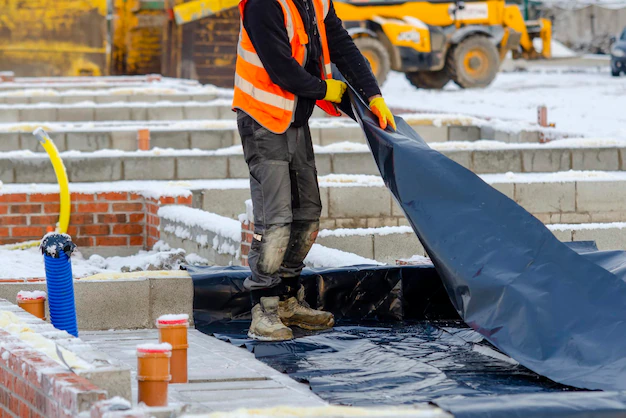4 Innovative Uses For Polythene You’ve Never Thought Of

Plastic bags and bubble wrap probably come to mind when you think of polythene.
We rely on those flexible polythene-derived materials tons for holding stuff and padding our packages. No doubt it serves us well for wrapping, packing, and shipping things safely.
But polythene is actually showing up in way more places than you’d expect these days. Engineers and innovators across many industries have uncovered handy new uses for polythene sheeting and films. From agriculture fields helping plants grow to lightweight shelters housing people displaced by disasters, polythene is being adopted in unconventional ways.
In this article, we’ll highlight the 5 uses for polythene you likely haven’t heard of yet. We’ll explain why industries like farming, construction, and even sports teams are now leveraging this versatile plastic in creative ways.
So let’s start with the first application.
Polythene Usage In Agriculture
In the agriculture sector, polythene has become incredibly useful for farmers.
First, polythene sheets and films make excellent crop covers. Stretching sheets of polythene over seedbeds, plant rows, or even entire fields helps regulate temperature and moisture levels. This allows earlier seasonal planting, frost protection, and reduced irrigation needs, which in the end, helps you to maximize crop quality and yields.
Polythene crop covering also provides insect control and shade options. Special UV-stabilized and infrared poly films have even been designed just for agriculture usage. After harvest, the durable polythene crop covers can be easily cleaned, rolled up, and reused season after season.
Secondly, polythene mulch films are extensively used in agriculture today. These thin plastic sheets are placed over the soil beds around crops to suppress weed growth and retain moisture. As a result, you get a reduced manual weeding and improve crop growth and yields.
Agriculture mulch films come in various colors, like black, white, and silver. The different shades actually change soil temperature in beneficial ways for certain crops. Perforated, biodegradable poly mulches are now popular options allowing water percolation while avoiding leftover plastic debris.
All these benefits, that polythene offers have made it a vital modern tool for farmers. Creative new agricultural poly films continue to be developed, like types that selectively admit certain beneficial wavelengths of light.
Polythene In Construction
Beyond the farm, polythene sheeting and films are increasingly adopted in the construction industry as well. Builders and contractors have uncovered a variety of handy uses for the durable and adaptable plastic.
For one, thin polythene sheets make excellent concrete curing blankets. Covering freshly poured concrete with polythene film helps retain moisture in the slab during the initial curing process. This prevents the concrete from drying out too quickly, minimizing cracks and imperfections. The benefits are higher strength concrete with better longevity.
Polythene vapor barrier films are also indispensably used under slab foundations now. Laid underneath concrete, these plastic sheets prevent moisture migration from the soil up through newly poured slabs. Controlling unwanted vapor transmission prevents myriad issues like floor tile damage or mold growth.
Builders also employ polythene sheeting as handy dust covers during interior construction finishing work. Painting contractors use specially designed textured poly drop cloths to collect excess paint. The textured plastic surface allows better paint absorption compared to canvas drop cloths.
Those are just a few examples of how polythene lends adaptability on construction sites. Between its concrete curing ability, vapor-blocking properties, and protective covering capability, builders are finding more ways to leverage polythene films and sheeting all the time.
Polythene In Disaster Strikes
Polythene’s versatility also enables innovative shelter solutions for some of people’s most vulnerable times — the aftermath of disasters. Durable and lightweight polythene sheets are being adapted into tent shelters, domes, and tunnels to house those displaced after catastrophe strikes.
For example, polythene tunnel shelters consisting of arched rib frames covered by polythene sheeting can be rapidly deployed as a temporary refuge. These tunnel shelters provide insulation and protection from the elements, while the polyethylene covering helps naturally diffuse daylight – preventing gloom. Sturdy yet easy to transport and assemble, they have offered shelter for displaced citizens following events like earthquakes, floods, and tornadoes.
Similarly, large yet lightweight polythene dome tents like those from companies such as Alaska Structures provide easily airlifted emergency shelter wherever needed. These tents can house dozens of cots, feed relief workers, and give storm victims a respite – however temporary. Their polythene cover stands up to gusts and rainfall that would shred traditional canvas tents. And unlike metal or wood structures, they don’t risk collapse or splintering under adverse conditions.
The days and weeks after the catastrophe are tragic and tumultuous enough for its survivors. But innovators have formed polythene’s seemingly mundane mail-order packaging into sturdy sanctuaries – providing victims temporary respite as they begin piecing lives back together. Speaks volumes to polythene’s versatility, doesn’t it?
Polythene Harnesses The Sun’s Rays
Not only does polythene provide physical shelter and refuge in times of need, but it also helps capture and harness the sun’s energy for residential heating and hot water needs year-round through solar thermal collectors.
Most solar heating systems consist of rooftop-mounted insulated copper piping covered in a glazing of strong, UV-resistant, and heat-conducting polythene film. The transparent polyethene glazing allows over 90% sunlight penetration to the copper tubing below. This heats the water flowing through it up to temperatures exceeding 200°F.
The polythene film covering serves as an integral heat trap — magnifying and retaining heat within while convective losses are minimized. This enables efficient capture, conversion, and transfer of the sun’s warmth into usable domestic water heating. And the properties of polyethene allow it to withstand extreme rooftop temperature shifts from frigid nights to blistering sunny days through all seasons.
Polythene’s transparency, flexibility, strength, and thermal conductivity make it perfect for harnessing the abundant free energy streaming down from above. In fact, high-efficiency vacuum-sealed polythene tubing collectors can heat water so effectively that supplemental booster heat is rarely needed even in colder northern latitudes.
Final Word
Who knew the common plastic products we rely on daily for everything from food storage to online order shipments also moonlight with such versatile flair?
It says something about the adaptability of this material that innovators keep finding ways to repurpose polythene far from its original use cases. Its durability lends well for construction tasks, while special synthetics allow recreation even during the rain. Film applications harness natural elements like soil warmth and sunshine. The list goes on and on.
Polythene is a testament that practical materials need not be one-trick ponies doomed to a single function. In the right hands, they can serve dramatically multipurpose roles.
Read Also:


























Leave A Reply